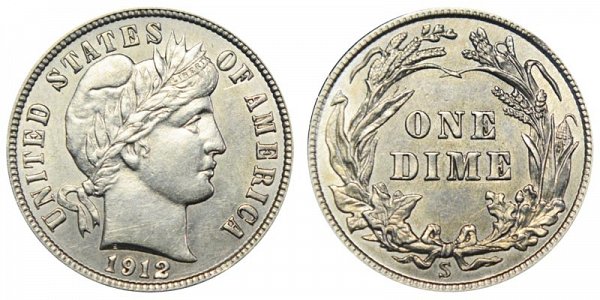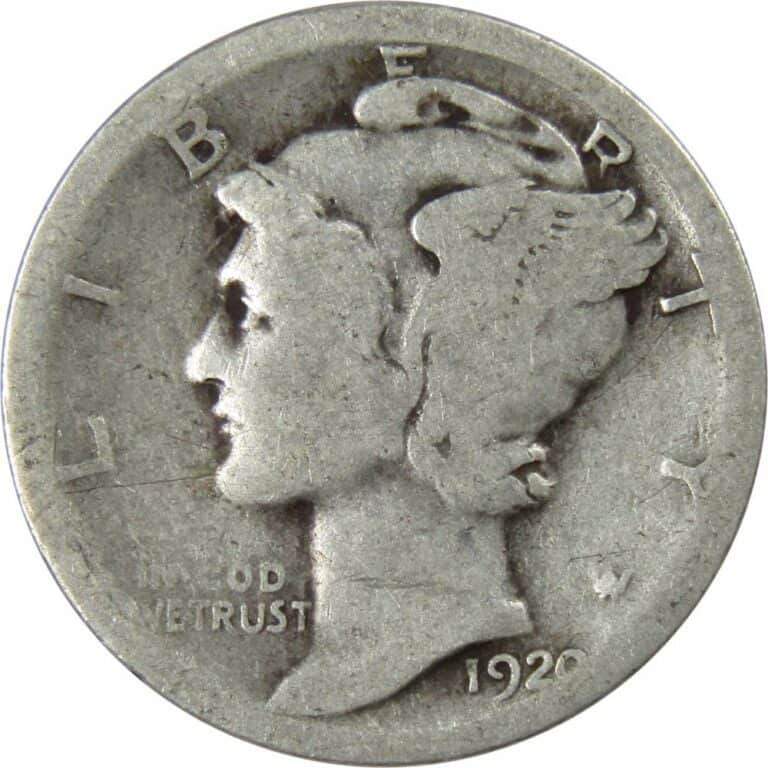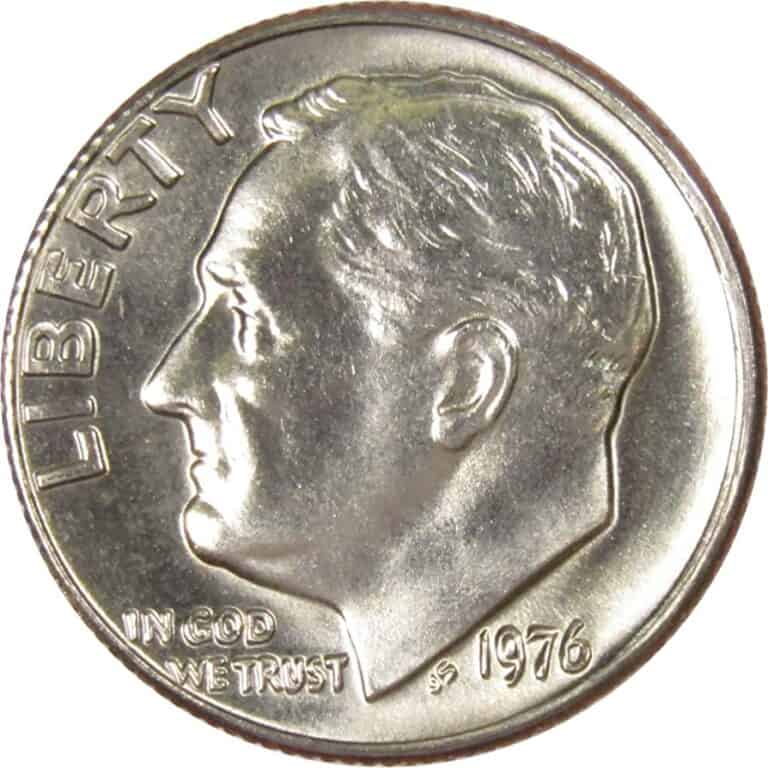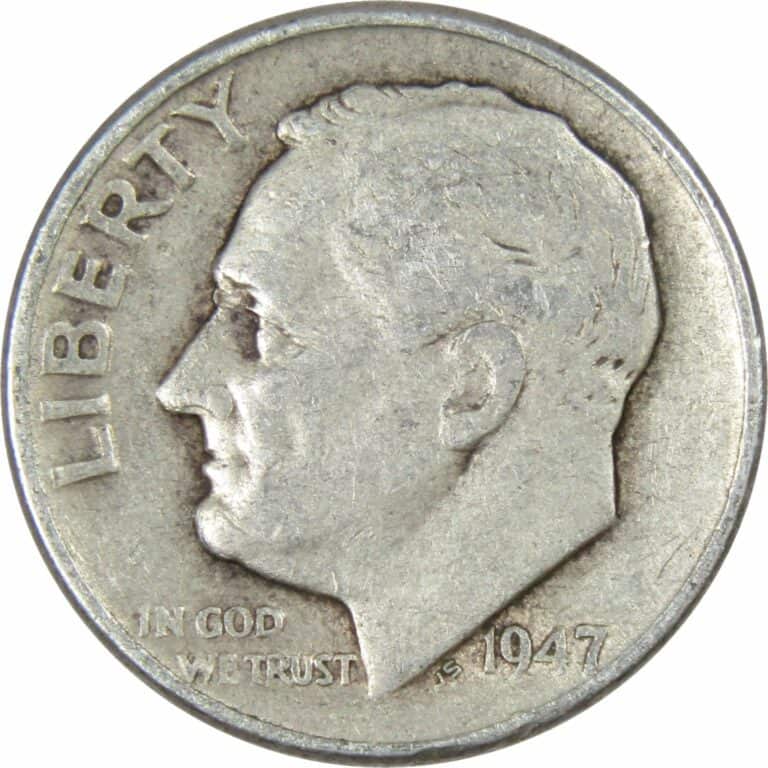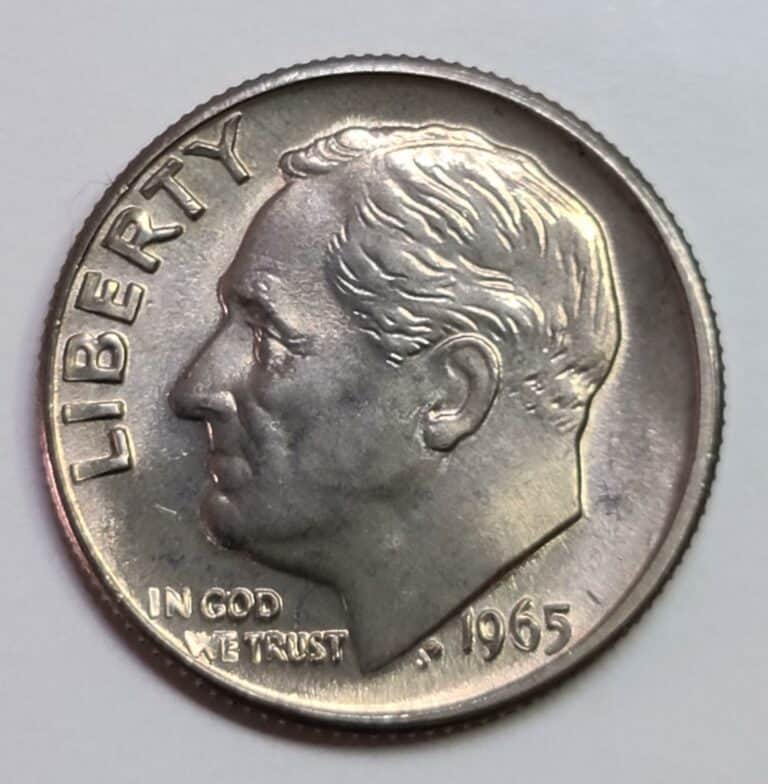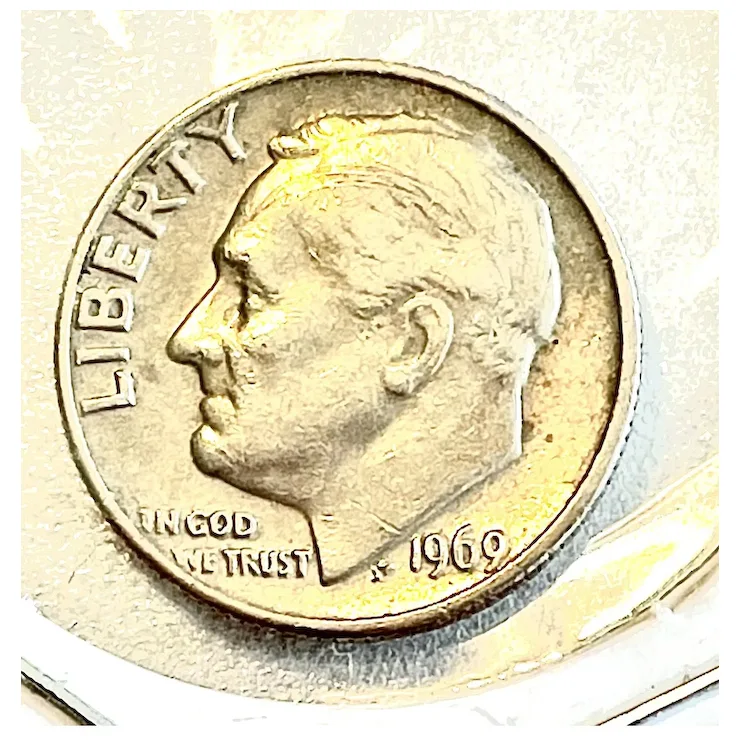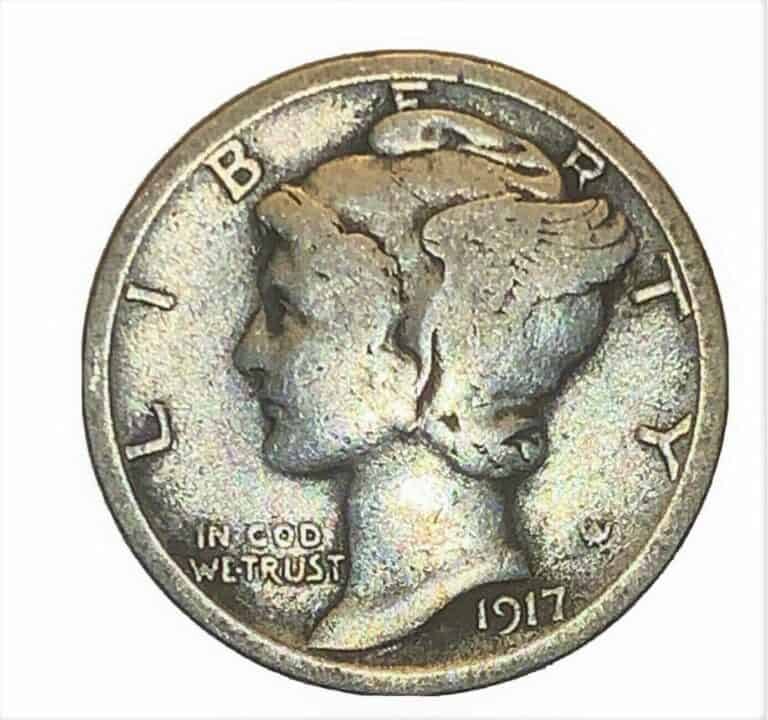1912 Dime Value: How Much Is It Worth Today?

While 1912 isn’t a highlight year for dime collecting, the 1912 dime is a staple for several reasons. These coins are inherently valuable due to their age, but coins in good condition are worth much more than the rest.
Most 1912 dimes are worth $3.22 to $46, but “Uncirculated” coins sell for $109 to $158. The 1912 proof dimes are worth at least 3 times this amount due to their significantly smaller quantity.
Because this is such a wide range, there are a few basics to understand before you assume you have a coin worth hundreds of dollars. This guide digs deeper into the different types of 1912 dimes you may come across, how to determine their condition, and what types of valuable errors are likely with this coin.
1912 Dime Value Chart |
|||||
| Mint Mark | Good | Fine | Extremely Fine | Uncirculated | Proof |
| 1912 No Mint Mark Dime Value | $3.22 | $3.76 | $21.00 | $109.00 | / |
| 1912 D Dime Value | $3.22 | $3.76 | $21.00 | $110.00 | / |
| 1912 S Dime Value | $3.22 | $6.08 | $46.00 | $158.00 | / |
| 1912 Proof Dime Value | / | / | / | / | $500+ |
The 1912 is part of the Barber Dime series that ran from 1892 to 1916. These coins feature the same obverse design as the quarter and half dollar from this time.
Charles Barber’s coinage resembled French currency of that time. The front shows a depiction of Lady Liberty wearing a crown of olive branches, a Phrygian cap, and a ribbon that reads “LIBERTY” and ties at the back of her head.
The front inscriptions include UNITED STATES OF AMERICA at the top rim and the year 1912 along the bottom rim. Barber marked his coins with a “B” at the bottom of Lady Liberty’s neck.
The back design is much simpler. The 1912 dime has the standard ONE DIME denomination marked in the middle surrounded by a mixed material wreath. In the top right are two corn cobs, followed by oak leaves and an acorn below, wheat on the top left, and maple leaves on the bottom left.
The reverse wreath is tied together with a bow at the bottom, and coins with a mint mark show it beneath the bow.
1912 No Mint Mark Dime Value
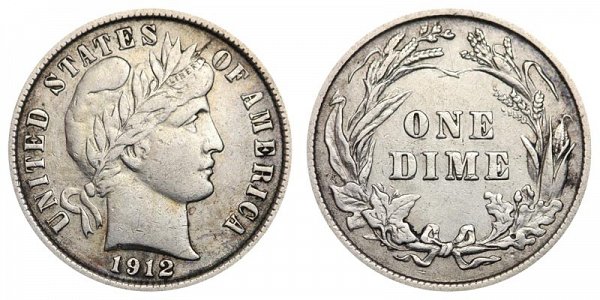
Philadelphia minted 19,349,300 dimes in 1912, and none of these coins have a mint mark . This makes up the vast majority of 1912 business strike dimes, meaning that the no mint mark dimes have the lowest value overall.
They’re worth a bit over silver melt value even in good condition. Coin conventions, dealers, and markets start listing them around $3.22, but those in “Fine” or “Extremely Fine” condition climb to $3.76 to $21.
Once they hit “Uncirculated” condition the value climbs steeply. These high grade 1912 dimes start at $109, but they often sell for much more at auction.
The auction record for the 1912 no mint mark dime is a PCGS-graded MS67 that sold for $8,050 in 2005. The dime is regarded for its thick, frosty luster and a beautiful array of tonal colors such as gold, olive, crimson, and gunmetal blue.
While Barber dimes are not regarded for their beauty, the coin has an icy reverse and sharp definition that has it tied with 4 for finest.
More on the Barber Dime
The Barber coin series was short-lived and followed by The Renaissance of American Coinage as soon as the designs reached their 25 year minimum.
The Barber dime replaced the Seated Liberty design in 1892. Prior to this, the U.S. Mint opened a public contest with a prize of $500 for coin redesigns. Many major artists refused to participate because there was not a set fee for their sketches and designs, and the results were less than ideal.
Eventually, the Mint rejected all entries and instead assigned the workload to Engraver Charles Barber. The designs we see today achieved their goal of function and economic appeal, although opinions from collectors are overall bleak.
The 1912 dime was produced just 4 years before the end of the Barber dime series.
1912 D Dime Value
Denver struck the second highest number of dimes this year, putting forth 11,760,000. While they’re short 8 million from the Philadelphia production, 1912 D dimes are valued similarly.
A coin in “Good” condition remains around $3.22. In “Fine” condition the price jumps to $7.76, and then again to $21 when “Extremely Fine”. When found in near-perfect condition, they’re worth a bit more than the Philadelphia dimes (about $110).
The auction record for the 1912 D dime is a PCGS MS67 with a clean surface and strong luster. The coin sold for $7,343.75 at a 2016 auction. It’s one of 3 1912 D dimes tied for finest.
1912 S Dime Value
The 1912 S dimes from the San Francisco mint had the lowest production of circulation dimes from 1912 at just 3,420,000. Because of this, the coins are worth much more when found at higher grades.
In “Good” condition they remain at the $3.22 mark, but nearly double the value of other business strike 1912 dimes at $6.08 in “Fine” condition. The trend continues to see an “Extremely Fine” 1912 S dime attract $46, while “Uncirculated” coins sell for about $158 or more.
The 1912 S dime auction record holder further emboldens the difference in value from other mints. This PCGS MS67 with CAC verification sold for $21,150 in 2014. While it’s of similar grade as the other coins, the S mark is what bolsters this value.
The record holder is tied for finest with 2 NGC coins and 1 CAC coin.
1912 Proof Dime Value
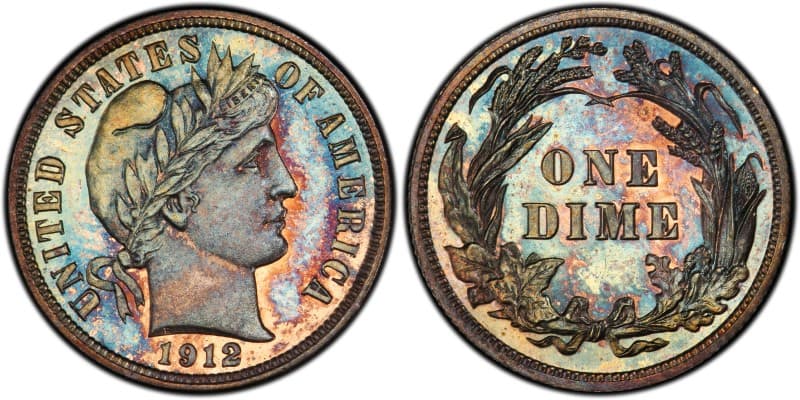
Only 700 1912 proof dimes were made, making them extremely scarce and valuable. Most of these coins were saved by collectors, resulting in a fairly stable population of highly-graded proof coins.
Proof coins go through a unique process to ensure they’re the best example of the coin from that year. They use special dies and are struck twice so details stand out proudly. Beyond this, the regular cleaning and polishing of the dies improved the contrast between the coin’s field and details.
Proof coins are nice to look at, and the average 1912 dime sells for at least $500. This price may increase with higher graded coins. Unless a proof coin somehow made its way into circulation, this is an attainable price.
While most proof coins seem to hit a lower price ceiling when they go to auction, the limited production of the 1912 proof dime makes the coins much more valuable. The current auction record holder sold for $12,925 with a PR67+ CAM grade from PCGS.
The coin is also CAC verified and it’s the sole finest example of the 1912 proof dime. With original green, lavender, and blue toning and no significant marks, it’s one of the best examples of the 1912 Barber dime around today.
Cameo Designation on Dime Proof Coins
A few 1912 proof dimes have “CAM” designations to recognize the remarkable cameo contrast of the coin. According to PCGS, these coins have light to medium frosting of devices on both the obverse and reverse of the coin.
Coins with a CAM designation were likely the first ones struck with a die after it was polished and cleaned, while those without were likely struck later on. While several 1912 proof dimes have this designation, there are none in PCGS auction records with the higher Deep Cameo designation.
1912 Dime Grading
The 1912 Barber dime doesn’t contain a great deal of details that can be worn down over time, but there are several things to check when determining coin condition. Professional grading is the best tool for anyone needing a serious evaluation or hoping to buy or sell the coin, but you can check a few things at home.
Unless you have a Mint State 1912 dime example on hand, you should evaluate videos and images online of these coins to understand how the coin is supposed to look. From here, it is easier to determine where a dime may have worn down more or how much the coin has changed over time.
While high-grade 1912 dimes showcase details in sharp contrast, high points on Liberty’s headband and smaller details like the strands of hair above her forehead are often affected first.
Other places to look at closely include contoured areas of her face, such as the cheek and neck.
A Note on “Cleaned” Silver Dimes
Beware 1912 dimes that are suspiciously clean; they’ve likely been manually cleaned, which often results in damage to the coin’s original surface. In most cases, if not all, it’s better to have an uncleaned coin than one that’s been handled this way.
Cleaned coins will not show the nuance of age on a Barber Dime. Instead of a subtle blend of colors and tones, you end up with a monotone coin that has many microscopic scratches that diminish its value.
Rare 1912 Dime Errors
While the Barber dime series is widely respected, it isn’t particularly coveted. This is true for collectors at the time as well, resulting in a lack of preservation of rare error coins.
Not many errors are widely recognized, either because there weren’t a significant number of them or because they disappeared into circulation. This doesn’t mean mint errors don’t exist on the 1912 dime, but you may be wary of any new varieties without proper verification.
Mint errors fall into one of three categories:
- Die errors: due to damage on the die that strikes the design on the dimes; often affects multiple coins from a single batch because the same die strikes a multitude of coins
- Planchet errors: due to the blank the coin is made on; commonly include chipped or clipped planchets due to manufacturing errors
- Strike errors: due to the way the coin was struck; usually have lower populations than other errors
The broadstrike error, which is recognized in the 1912 dime, falls into the final category.
For an error to attract any premium, your 1912 dime should already be of decent condition. In most cases, the value of the error is also tied to the condition of the coin.
1912 Broadstruck Dime
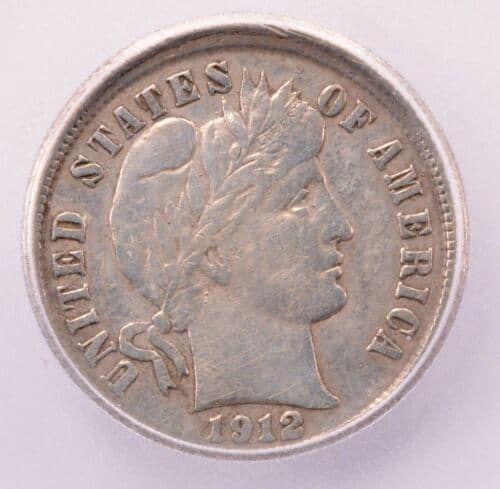
A broadstrike error refers to a coin that is struck when the collar that holds it between the dies is not fully engaged or breaks. This collar exists to ensure the coin retains its round shape, and without it the coin will flatten and spread out when struck.
The change in shape isn’t drastic, but noticeable nonetheless. On top of being slimmer and wider than normal, the coins also resemble a wax seal with the metal bubbling up around the edge of the die.
These coins are worth about $10 to $50 depending on the original condition of your 1912 dime and how dramatic the error is.
1912 Dime FAQs
How Much Is a Dime in 1912 Worth Today?
A 1912 dime is worth at least its silver melt value, but many sell for $3.22 to $158 or greater depending on the condition of the coin and its mintage. For example, coins from the Denver mint are often worth less than coins of similar condition from the San Francisco mint. Proof coins regularly sell for $500.
How Much Is a 1912 D Barber Dime Worth?
A 1912 D Barber dime is worth about $3.22 to $110. The value varies depending on the condition of the coin, with most 1912 D dimes falling into the $3.22 to $21 range. The most valuable 1912 D Barber dimes are worth hundreds to thousands, but they rarely sell outside of an auction.
How Much Silver Is in a 1912 Dime?
A 1912 dime is 90 percent silver and contains about .07 ounces of silver. Its bullion value fluctuates often alongside the value of silver. Most 1912 dimes, even heavily circulated ones, are worth more than their silver melt value.

